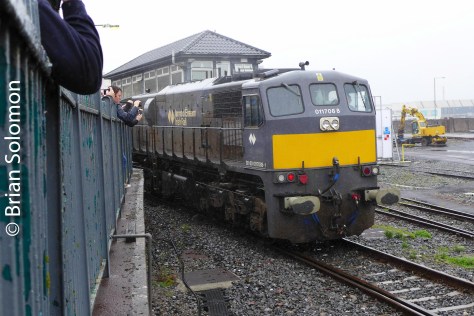For me the Lumix100 poses an imaging quandary.
It is an excellent tool. The camera is compact, well-built, packed with features, and has a superb lens that contributes to stunning image quality.


My difficulty with the camera is fitting it into my arsenal of imaging tools.
The LX100 lens range is lacking compared with my other cameras. It is fine for photos exposed in the ‘normal’ range. Its zoom spans the range from 24 to 75mm. In my younger days that range would have been enough to offer me virtually everything I needed for my photographic vision.
I’ve been spoiled by wider and longer lenses. These days, I want to push the range of view just a little further. I often see images that are beyond the range offered by the LX100.
That says more about the way I photograph than about the LX100.
As readers of Tracking the Light are aware, I carry a Lumix LX7 with me just about everywhere. While the LX100 is unquestionably a better camera, the LX7 suits me better for three reasons: 1) it is very compact and light weight, so fits nicely in my jacket pocket 2) it is comparatively inexpensive so when I wear it out or destroy it, I’m not out of pocket for a huge replacement sum. 3) The LX7’s zoom lens covers my vision more closely.
That said, I’m now coveting an LX100 because it is such a fantastic image making tool. Also, because its narrow zoom range limits my comfort zone, it will force me to make better photographs and consider compositions that otherwise I might not see.
But that is just speculation now. Last week, I gave back the borrowed LX100 to Denis McCabe who had lent it to me. I made about 500 photographs with the camera during the week I had it in my camera bag. As I write this Denis and his LX100 camera on are a grand adventure to the far side of the globe.
I’m still sifting through my LX100 images. There’s many more.



Tracking the Light Explores Photography Everyday!





























































!['Cheap 400 speed print film' [High Key].](https://i0.wp.com/briansolomon.com/trackingthelight/wp-content/uploads/2014/11/Amtrak_39_HIGH_KEY_P1090498.jpg?resize=474%2C317)
!['Whoops, I sent my print film in with a slide mailer' [Cross processing]](https://i0.wp.com/briansolomon.com/trackingthelight/wp-content/uploads/2014/11/Amtrak_39_CROSS_PROCESS_P1090507.jpg?resize=474%2C317)
!['Underexposed Ektachrome 200' [Expressive].](https://i0.wp.com/briansolomon.com/trackingthelight/wp-content/uploads/2014/11/Amtrak_39_EXPRESSIVE_P1090496.jpg?resize=474%2C317)
!['Fogged color print film' [Impressive Art].](https://i0.wp.com/briansolomon.com/trackingthelight/wp-content/uploads/2014/11/Amtrak_39_IMPRESSIVE_ART_P1090505.jpg?resize=474%2C317)
!['Underexposed Kodacolor 400' [Low Key].](https://i0.wp.com/briansolomon.com/trackingthelight/wp-content/uploads/2014/11/Amtrak_39_LOW_KEY_P1090499.jpg?resize=474%2C317)
![Black & white that I processed with exhausted fixer. [Sepia].](https://i0.wp.com/briansolomon.com/trackingthelight/wp-content/uploads/2014/11/Amtrak_39_SEPIA_P1090500.jpg?resize=474%2C317)
![Black & white printed with exhausted Dektol developer. [Monochrome].](https://i0.wp.com/briansolomon.com/trackingthelight/wp-content/uploads/2014/11/Amtrak_39_MONOCHROME_P1090501.jpg?resize=474%2C317)
![Overexposed, overprocessed Tri-X that I processed in the sink. [Rough Monochrome].](https://i0.wp.com/briansolomon.com/trackingthelight/wp-content/uploads/2014/11/Amtrak_39_ROUGH_MONOCHROME_P1090503.jpg?resize=474%2C317)
![Instamatic attempt with color print film. [Toy Effect]](https://i0.wp.com/briansolomon.com/trackingthelight/wp-content/uploads/2014/11/Amtrak_39_TOY_EFFECT_P1090508.jpg?resize=474%2C317)
!['Light leak.' "Oh no! I think I opened the back of the camera". [Sunshine].](https://i0.wp.com/briansolomon.com/trackingthelight/wp-content/uploads/2014/11/Amtrak_39_SUNSHINE_P1090511.jpg?resize=474%2C317)
!['This is my friend's cheap HO layout' (What a fool, he's tried to model Palmer!). [Miniature Effect].](https://i0.wp.com/briansolomon.com/trackingthelight/wp-content/uploads/2014/11/Vermonter_CabCar_CP83_MINIATURE_EFFECT_P1090537.jpg?resize=474%2C317)
!['Bargain film, only 6 months past the expiration date!' [Old days].](https://i0.wp.com/briansolomon.com/trackingthelight/wp-content/uploads/2014/11/Vermonter_CabCar_CP83_vert_OLDDAYS_P1090521.jpg?resize=474%2C709)
!['Kodak sent me a note with my slides, it said they had a "unique laboratory occurrence" and I got a free roll of 24 exposure K64.' [Bleach Bypass].](https://i0.wp.com/briansolomon.com/trackingthelight/wp-content/uploads/2014/11/Vermonter_CabCar_CP83_BLEACH_BYPASS_P1090536.jpg?resize=474%2C317)
!['Drugstore processed black & white' [Silky monochrome].](https://i0.wp.com/briansolomon.com/trackingthelight/wp-content/uploads/2014/11/Vermonter_CabCar_CP83_SILKY_MONOCHROME_P1090530.jpg?resize=474%2C317)
!['I think there's something wrong with my light meter. This was some Ilford HP5 the I processed last week and the negatives were a bit 'thin'. [Dynamic Monochrome].](https://i0.wp.com/briansolomon.com/trackingthelight/wp-content/uploads/2014/11/Vermonter_CabCar_CP83_DYNAMIC_MONOCHROME_P1090528.jpg?resize=474%2C317)
















































































































































































